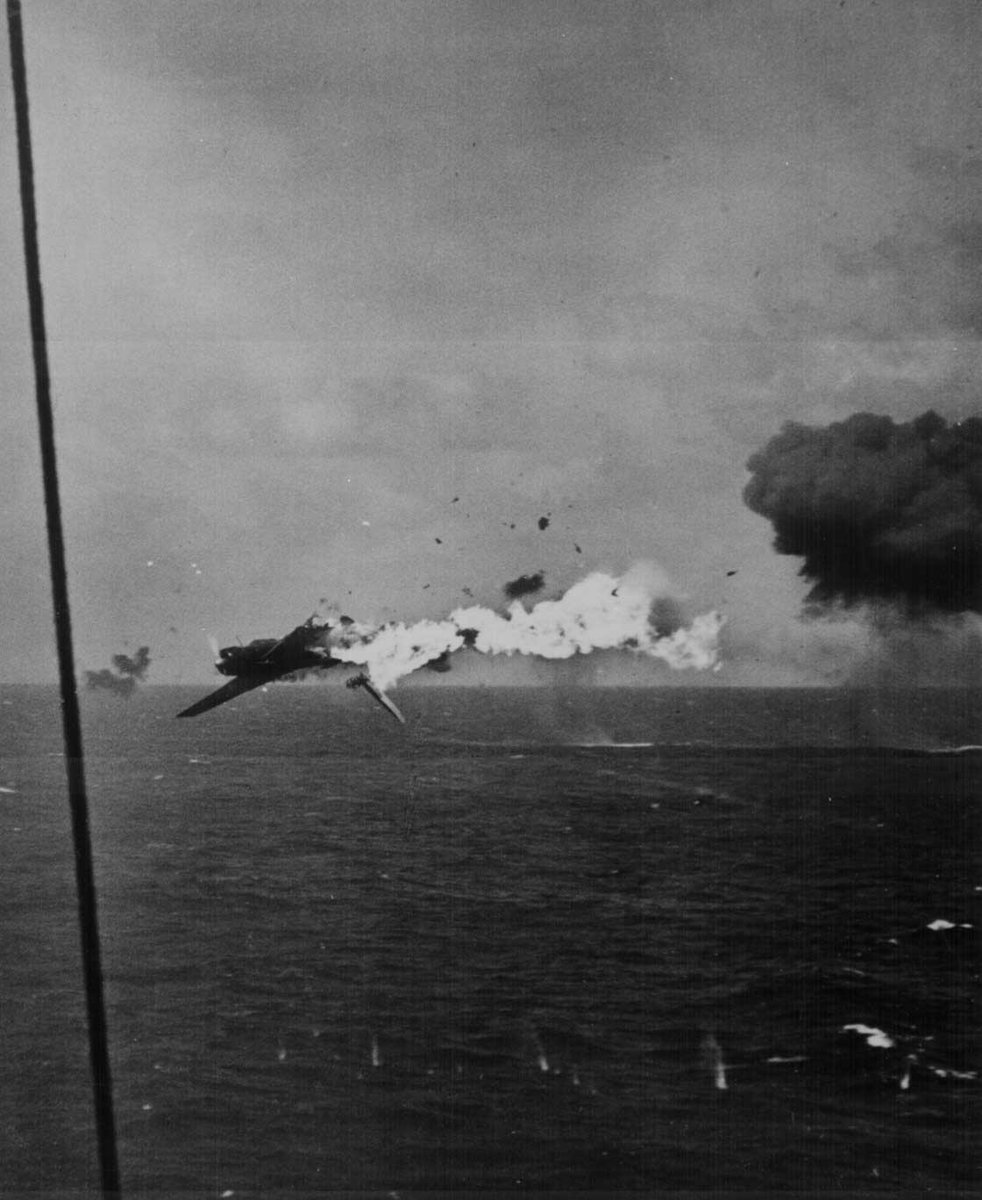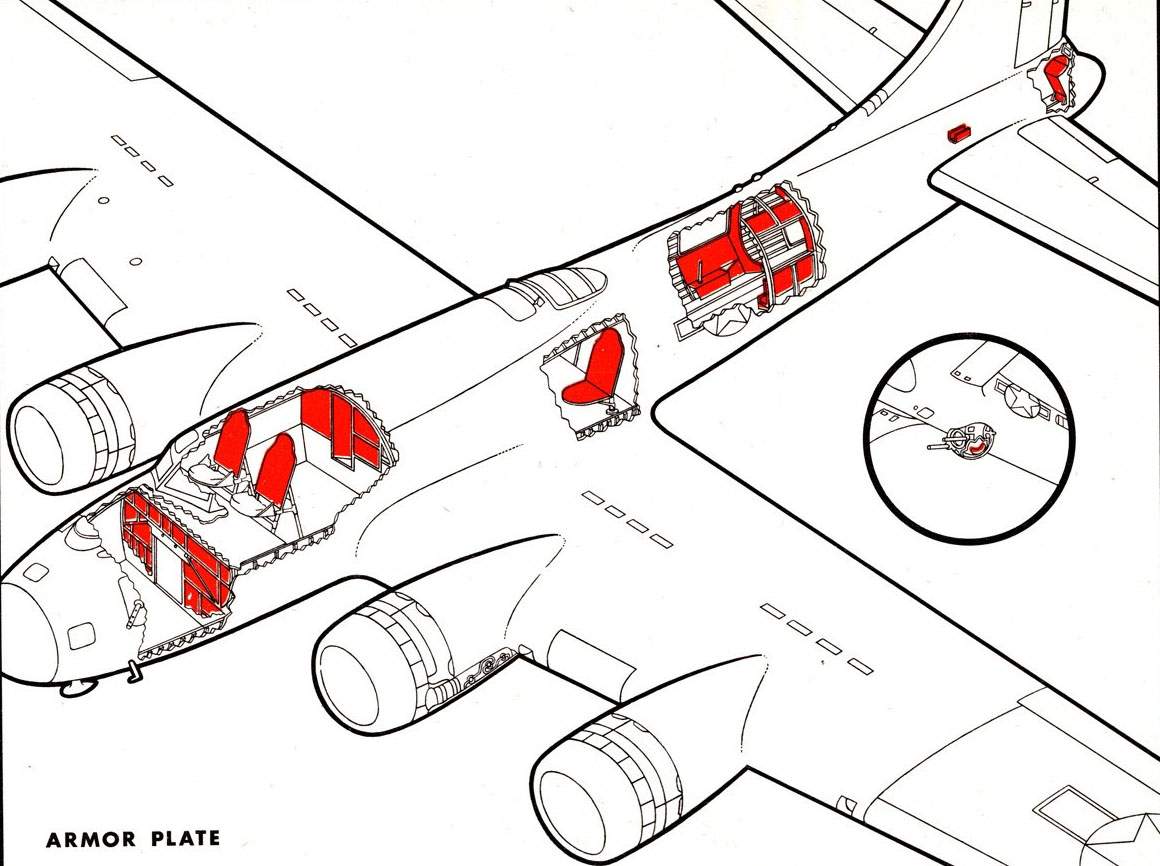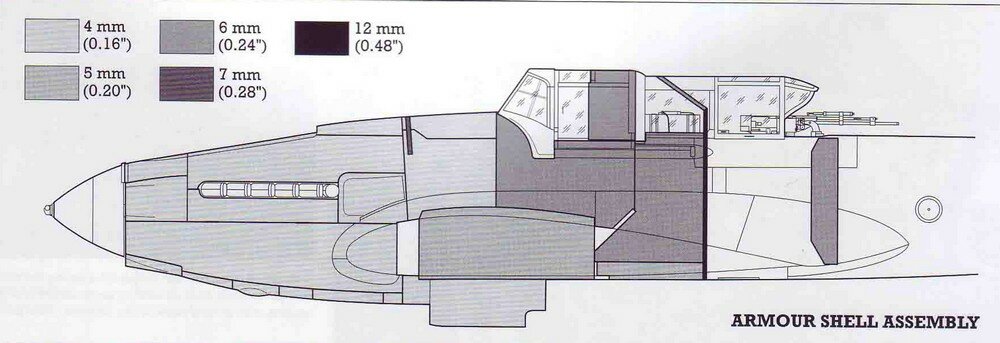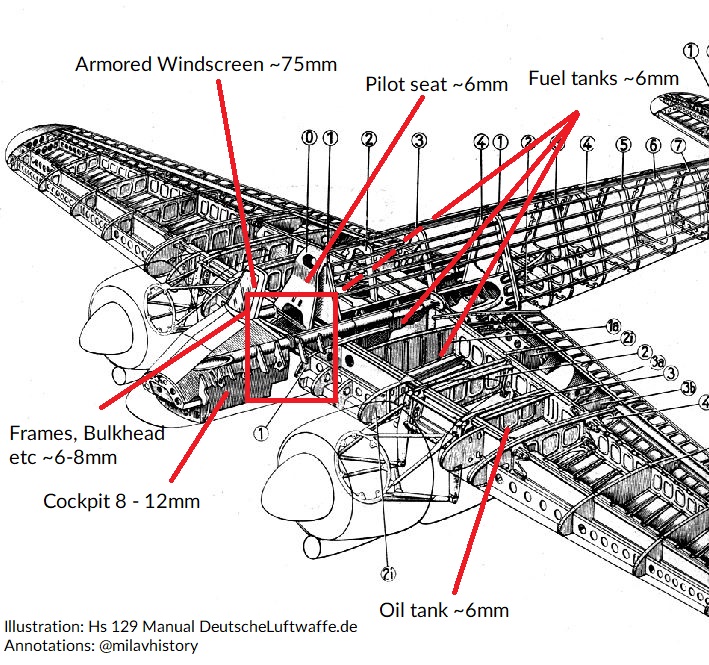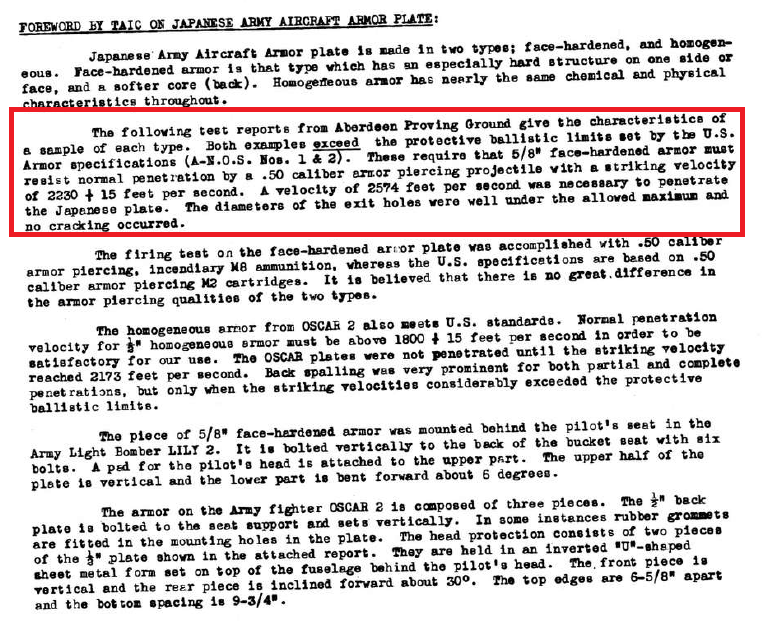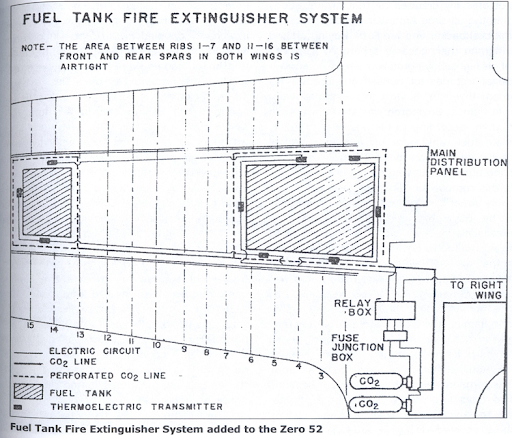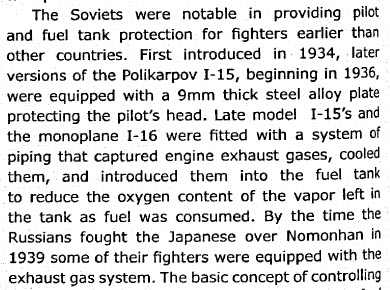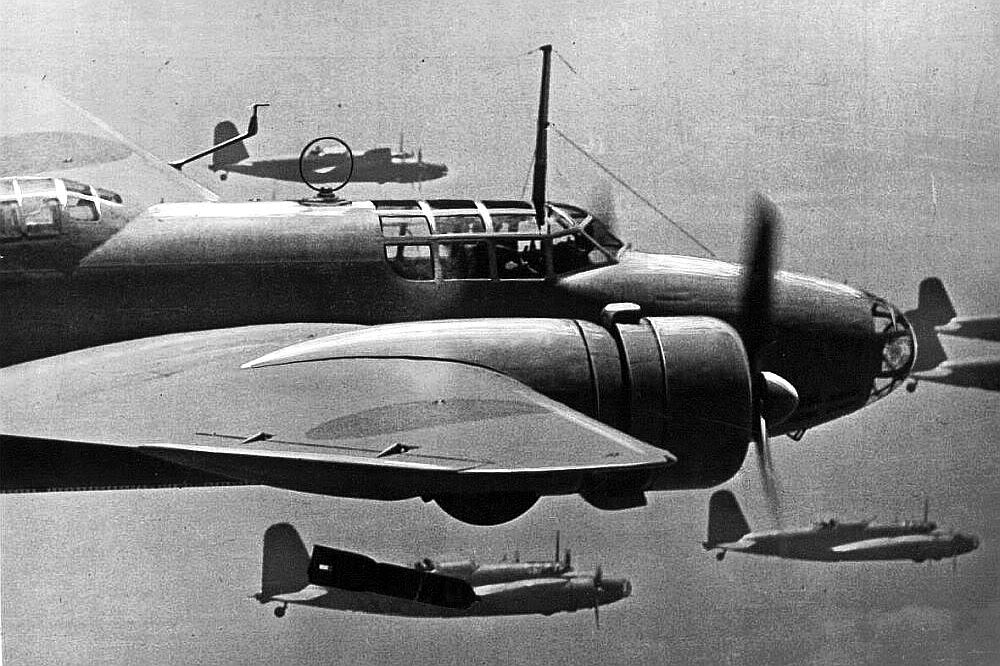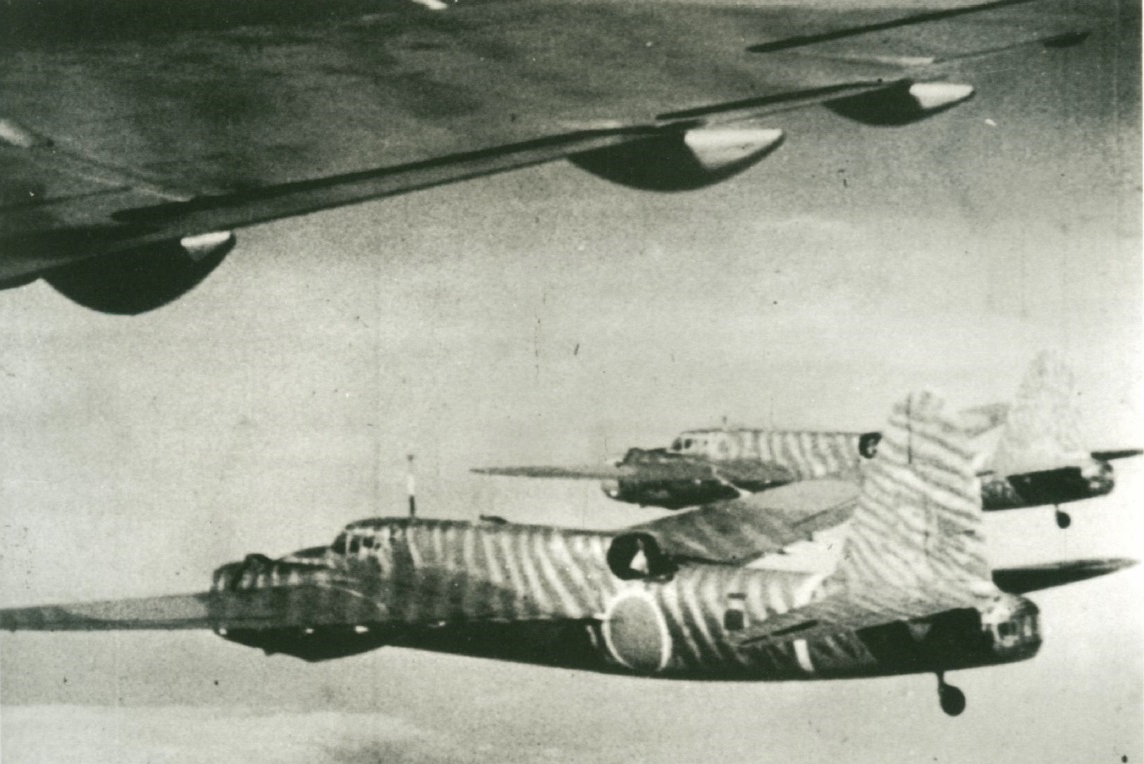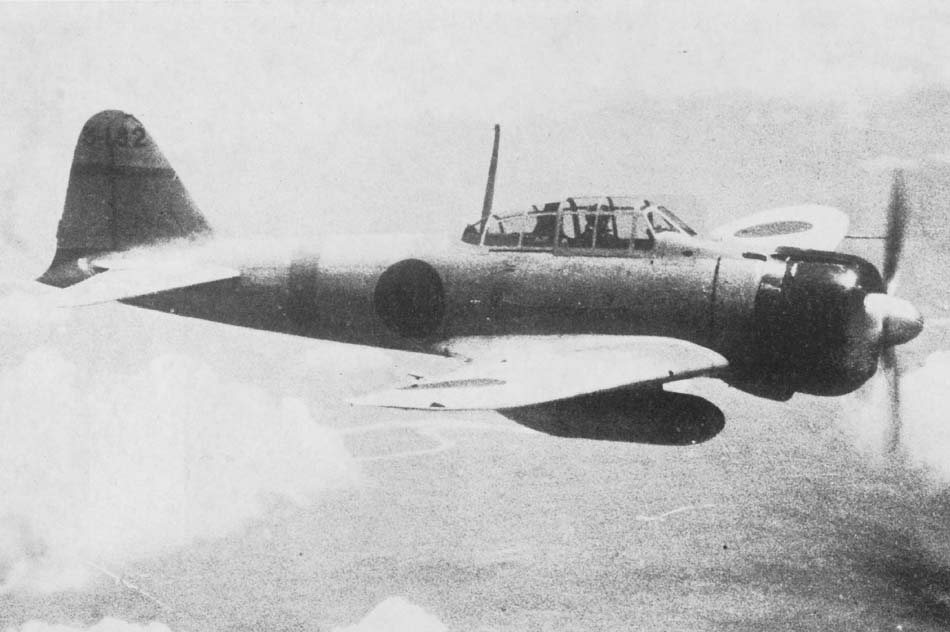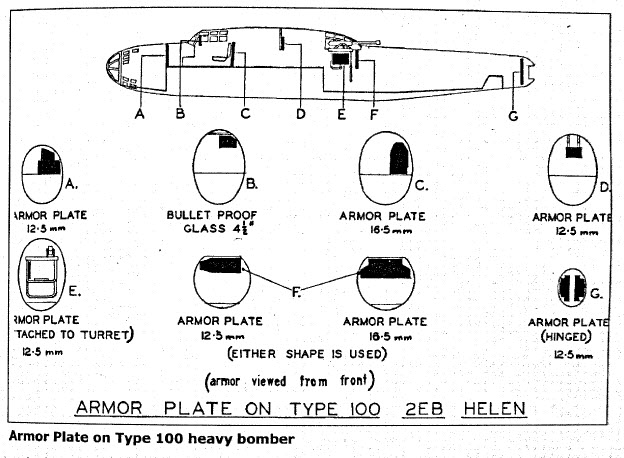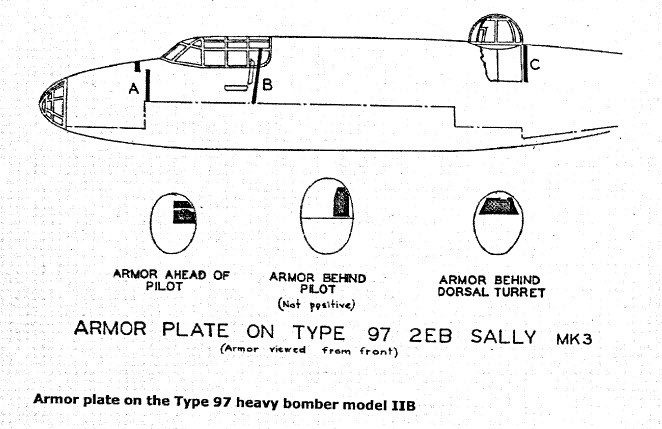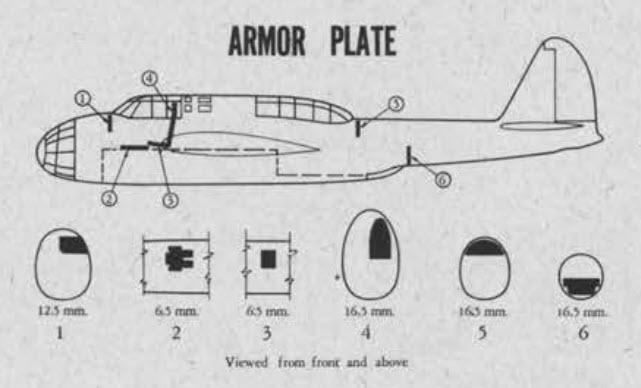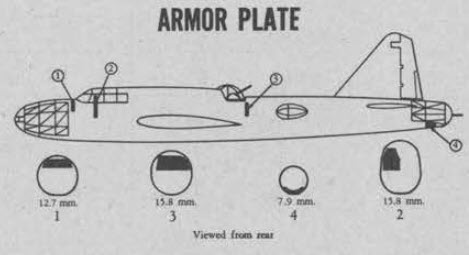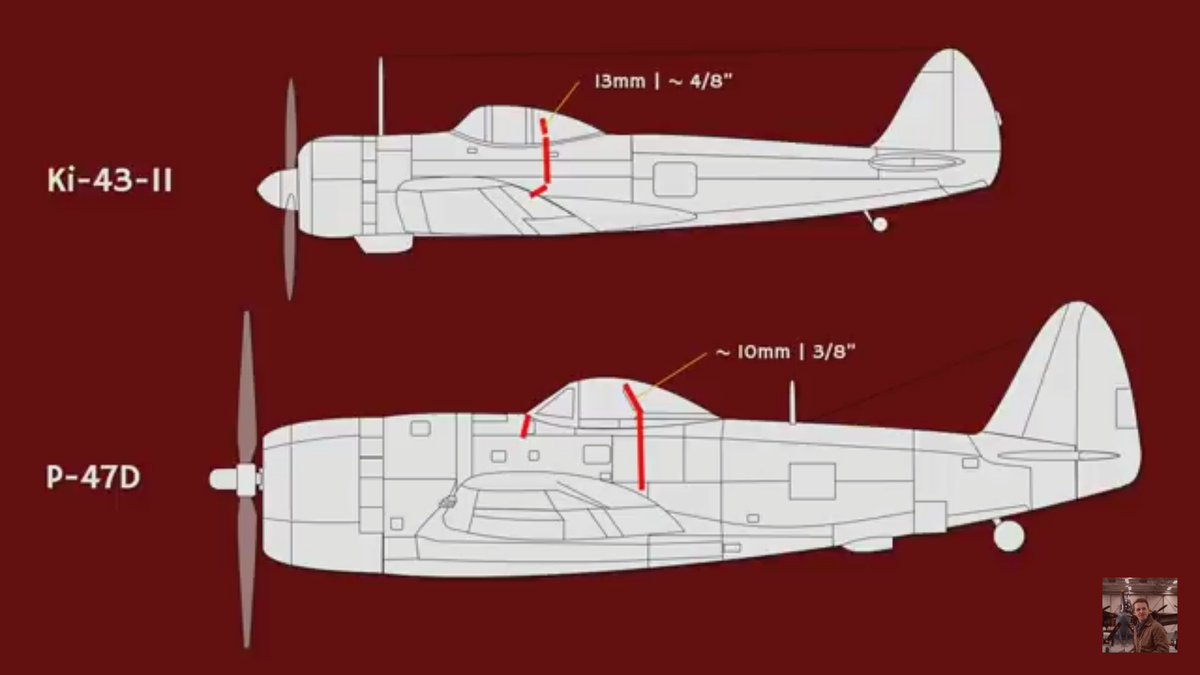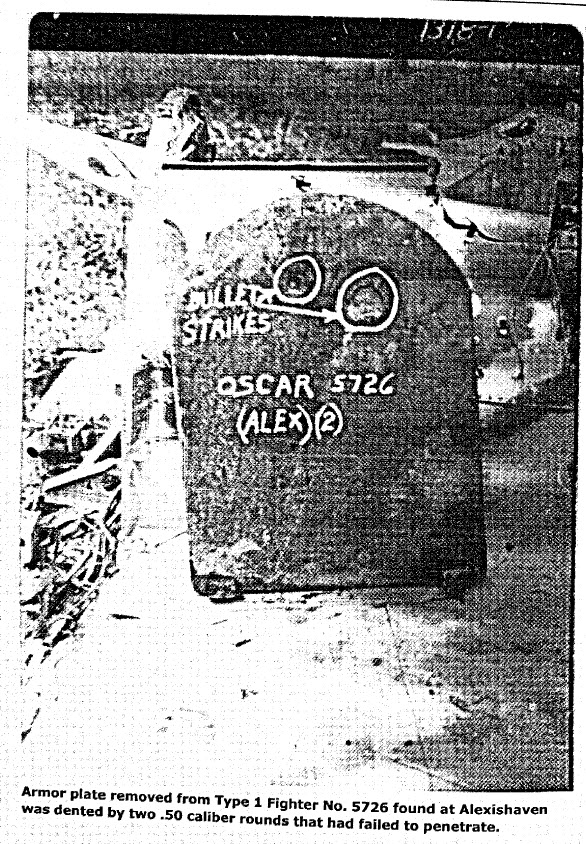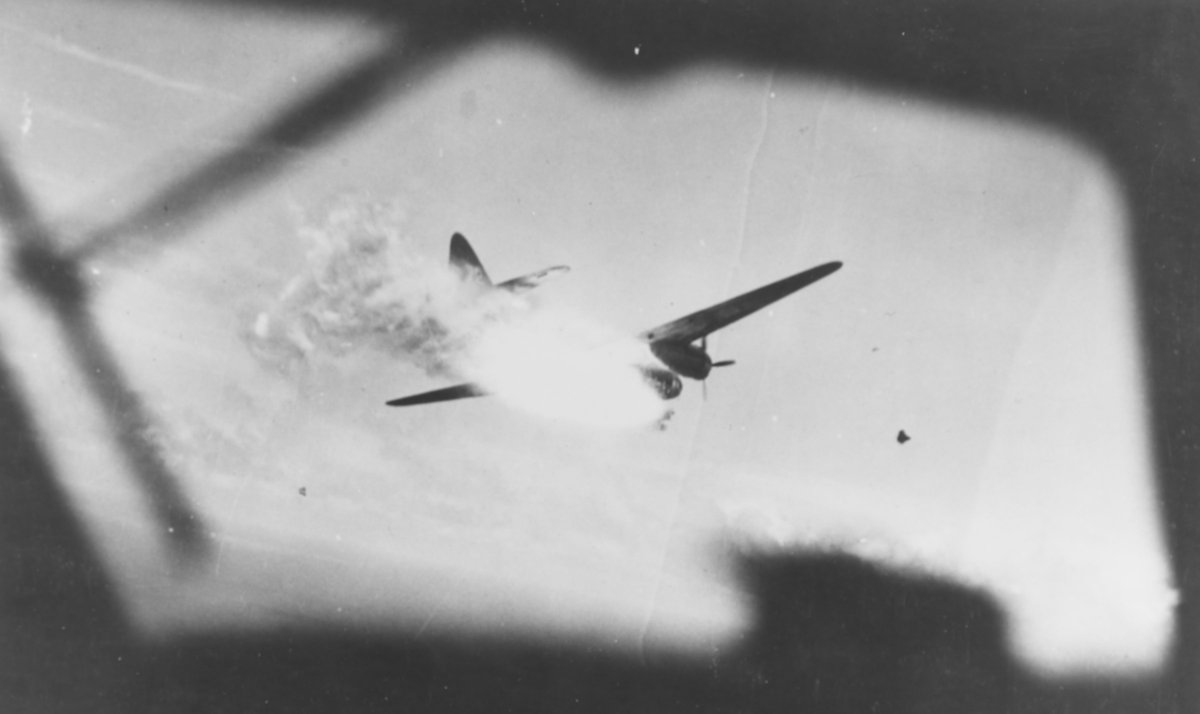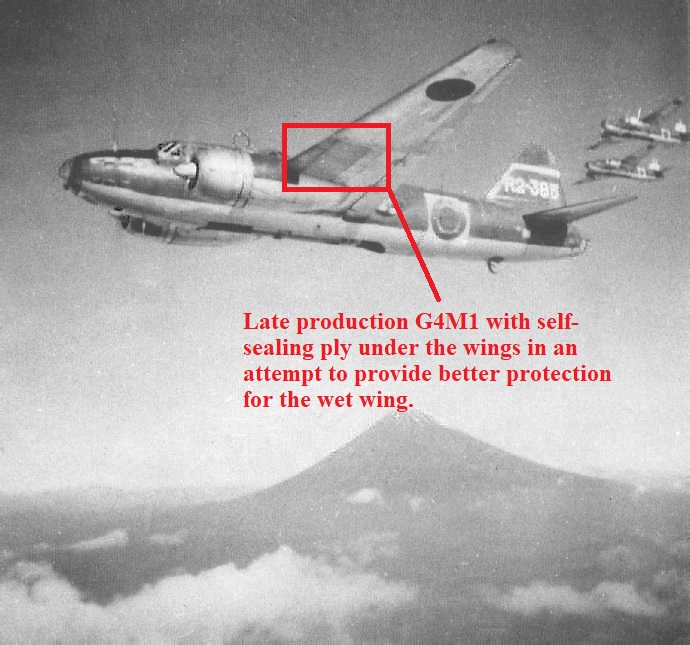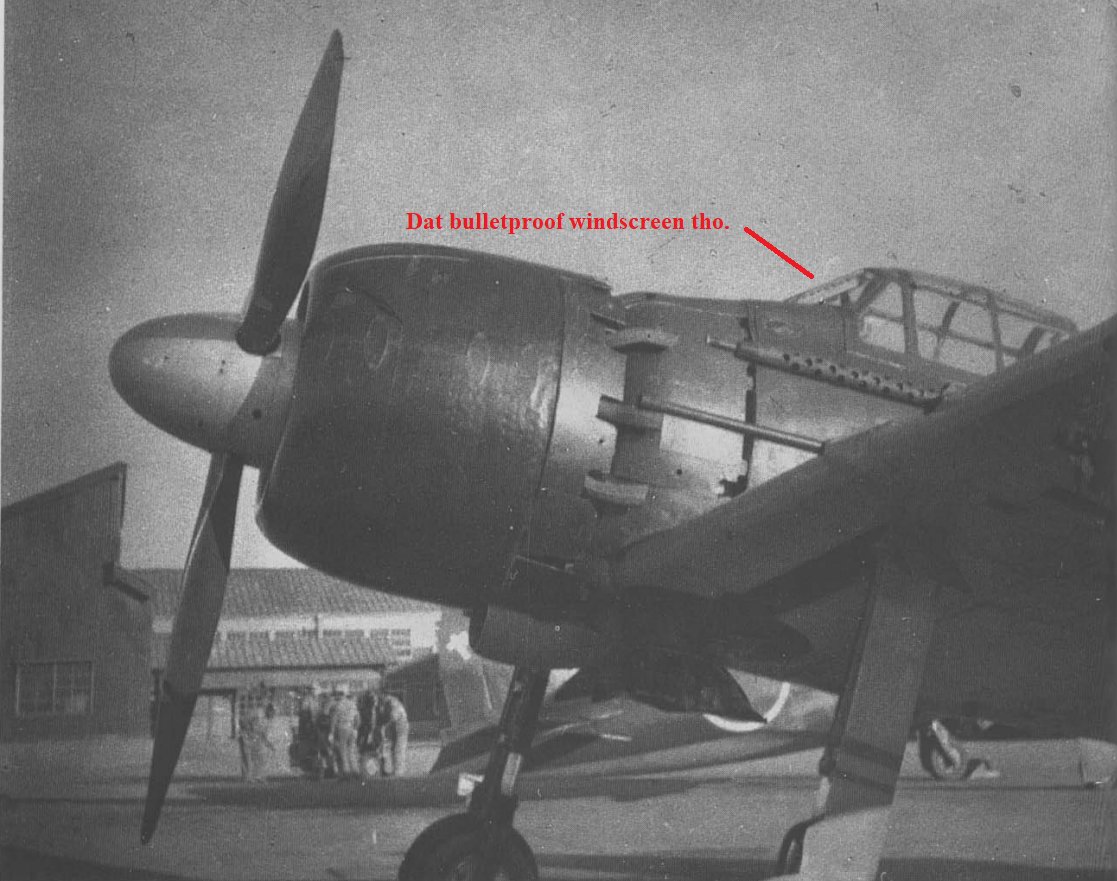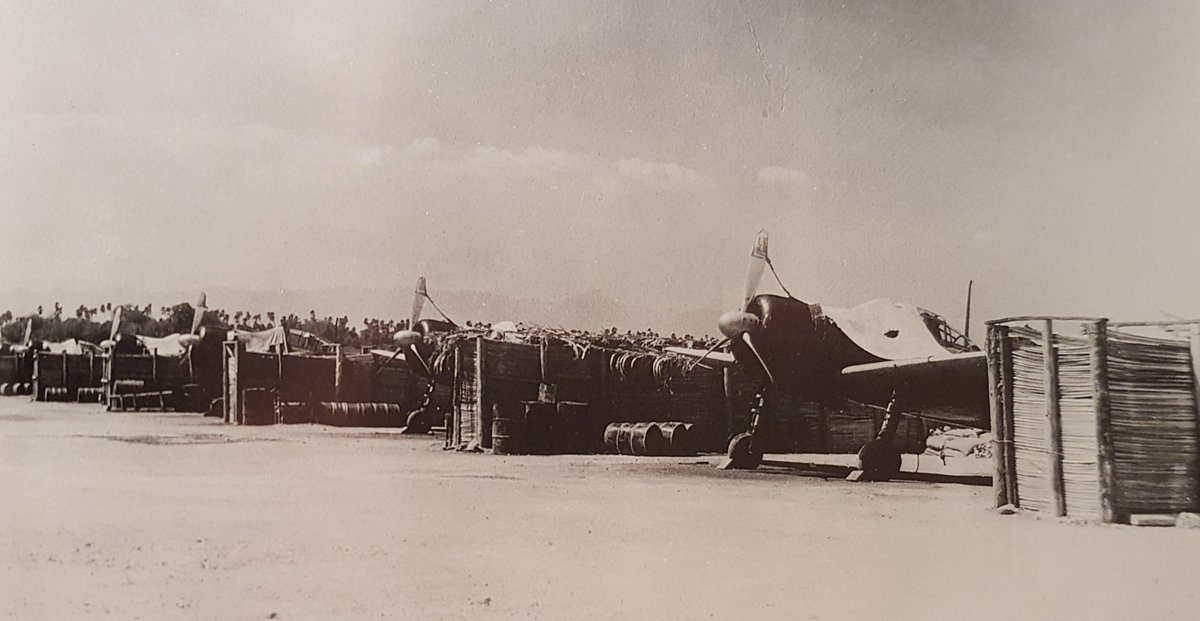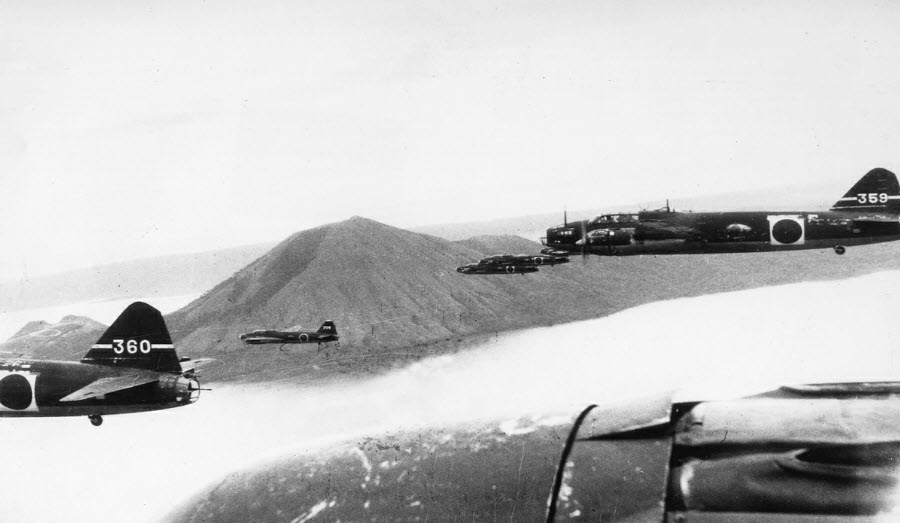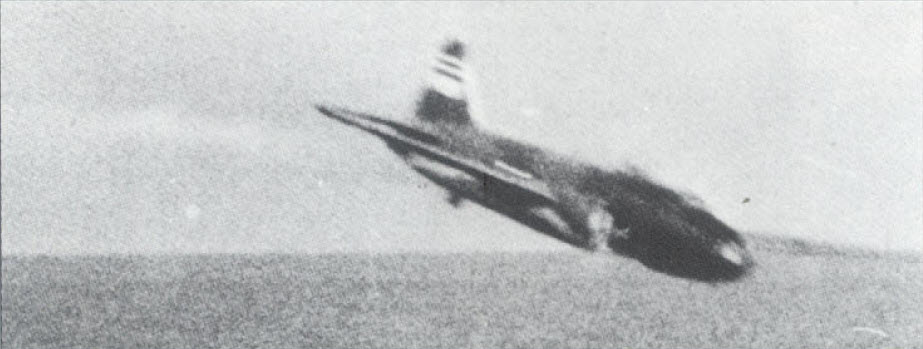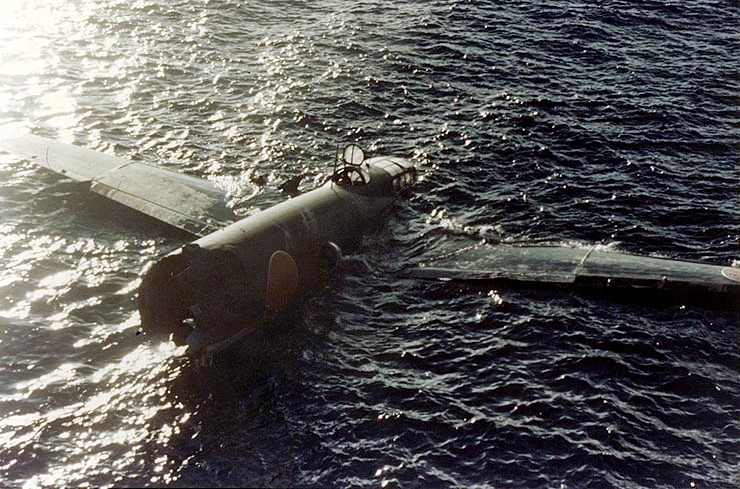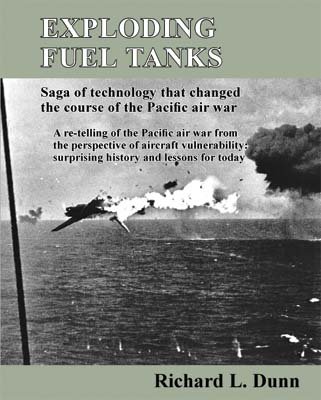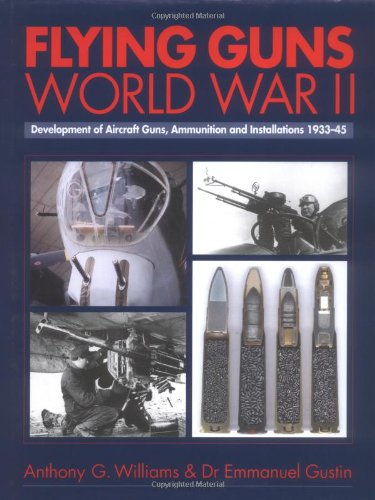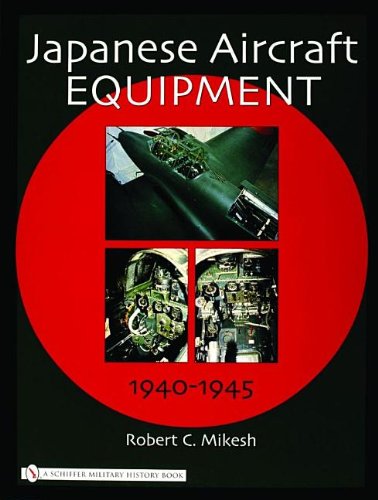A persistent Second World War myth concerns the lack of Japanese aircraft protection features (armour and fuel tank protection). There is truth in it of course, but the reality is more nuanced. It doesn't help that aircraft protection features are poorly understood in general.
"Aircraft protection features" generally consisted of a combination of armour, fuel tank protection, and bulletproof glass. The most heavily protected aircraft were lightly protected by ground vehicle standards. Even the B-17G had more unprotected than protected areas.
Armour was almost always located around the air crew/pilot. Some aircraft, primarily ground-attackers, had armour placed under the engines or elsewhere, but examples of that are rare. Protection features are heavy, and combat aircraft need to retain good performance.
There's also the rabbit-hole of armour thickness, effectiveness, and what, exactly, it was covering. E.G. The first armour protection added to the Spitfire was a thin 5mm armoured headrest. Not a full backplate. The Japanese army had a preference for thick backplates on fighters.
Fuel tank protection is an even larger rabbit-hole. It was not always self-sealing, constantly evolved through the mid-1930s and the war, and should also include fire suppression systems. Everyone went through their own learning curve, and I can't cover the details here.
Oh, AND one always has to keep field modifications in mind. A lot of people get really sure of themselves when they look at manuals or blueprints, but units in the field do all sorts of funky modifications. Either removing protection to save weight, or adding atypical protection.
With that brief overview out of the way, it must be understood that very few aircraft had protection features in the mid-to-late 1930s. Armour and fuel tank protection was not new, both had made some appearances in the First World War, but they were nowhere near standard.
The Soviets were the first to begin adding protection to their fighters in the mid-1930s, namely rudimentary fuel tank protection and pilot armour. They were way ahead of the curve. Protection for fighters was not widespread until 1941-42. 1940 was the key tipping point in Europe
By the standards of the mid-to-late 1930s, the lack of protection features in Japanese aircraft was... completely ordinary. In fact, the Japanese army was among the first to add rudimentary fuel tank protection to its bombers, before the British and Americans.
The Japanese quickly identified the vulnerability of their bombers from combat experience in China. The army responded by adding protection features to the Ki-21 in 1939, and specified armour and fuel tank protection in the requirements for its planned successor (the Ki-49).
Protection for fighters came later. The Ki-43-I had rudimentary fuel tank protection from early production. The Zero was unprotected, but as detailed above that was completely normal for 1940 and would remain unremarkable into 1942. The F4F-3 also lacked protection into 1942.
This thread would be too long if I started going plane-by-plane, but generally speaking the Japanese army took protection seriously. Some types were stupendously well-protected for their size (e.g. Ki-49-II). Others were more-or-less average in protection features (e.g. Ki-67).
Just looking purely at armour, the Ki-43-II had better rearward armour protection than a P-47D. The P-47D had a bulletproof windscreen and armour in front of the pilot as well. It was also a significantly larger and heavier aircraft, leading to more resistance to damage overall.
Richard Dunn, THE historian on the subject, notes that by the end of 1943 the Japanese army closed the gap in protection compared to Allied aircraft. The gap existed in the first place due to typical Japanese industrial weaknesses rather than some cultural aversion to protection.
The biggest struggle was in fuel tank protection. The Japanese, like everyone else, went through various iterations of protected tanks. It was a technological race, just one that gets little attention as most works assume fuel tank protection was a have-it-or-not, binary thing.
The Japanese navy was a different story from the army. They lagged far behind. Even by the end of 1943, the G4M had only received some rudimentary protection features. The J1N1-C and H8K were well protected, but all other Japanese navy aircraft had nothing until 1944.
It was specifically the Japanese NAVY which has fed into the stereotype that Japanese aircraft were unprotected. It didn't start to get serious about aircraft protection until 1944, but they were losing bad by then and most people stop paying attention to Japanese aircraft tech.
As @MilAvHistory has noted before, armour was a "saving throw." You weren't going to sit there and let them unload into you. It was a last ditch tool, or insurance against chance blows. If you were relying on your armour, then something else had gone wrong
How much did some Japanese aircraft lacking protection features matter? Not that much in the case of the Zero, IMO. It was a disadvantage to be sure, but Zero loss-rates were not abnormally high. They were quite low in fact, particularly in A2A. It wasn't a deciding factor.
Other aircraft are a more interesting story. The B5N and D3A were old 1930s designs that get a pass in my book, but the G4M is different. It was notoriously vulnerable. The navy insisted on maximum performance despite combat experience with the G3M in China. They had a rationale.
I won't get into G4M design decisions here, this thread is already too long, but the vulnerability of the G4M hindered its primary mission profile as envisioned by the navy - torpedo bombing. Loss rates were acceptable for high altitude bombing. Not as high as people assume.
Guadalcanal was an exception to that rule, because that air campaign was an unrelenting nightmare for the IJNAS. However, it was in low level anti-shipping attacks that the G4M suffered most. Its speed was of no help and it was exposed to vicious AA and fighter defences.
It was in that context where the lack of protection, particularly for the wet wing, manifested itself. Torpedo bombing of ships was an inherently dangerous task with high loss rates regardless of the aircraft, but getting better protection earlier definitely would have helped.
This is only scratching the surface, but I need to stop somewhere. Richard Dunn's book is the best, and only, book focused on this subject. Particularly related to Japan. There's a lot of information out there, but it is scattered through so many works that I can't list them all.

 Read on Twitter
Read on Twitter